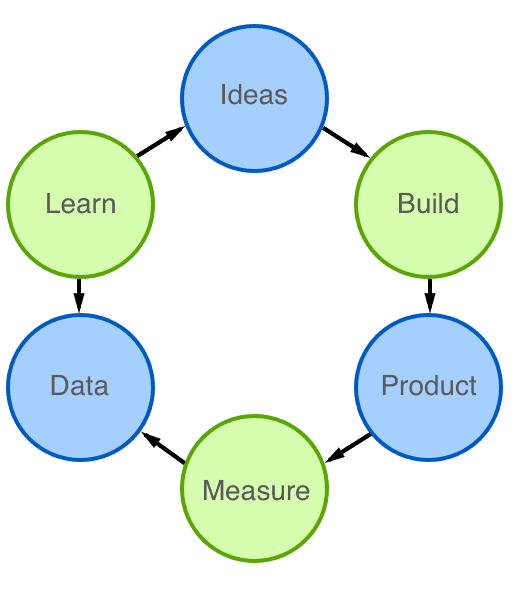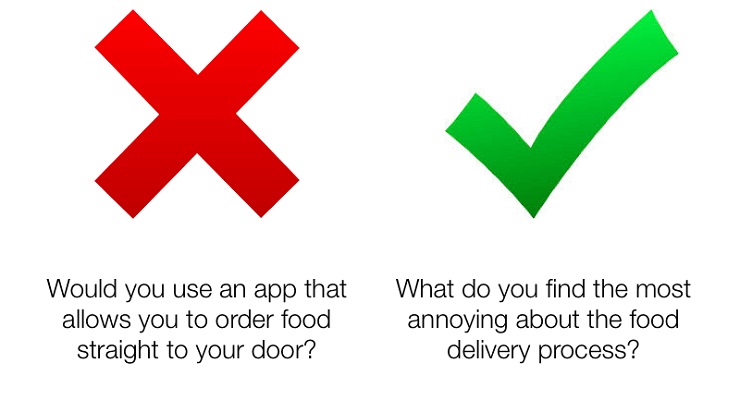Are you working hard to grow your business but feel like you are getting nowhere?
It’s difficult to get the ball rolling and keep it moving, especially when you have no experience starting a company before. So maybe you listen to another podcast or tear through a book on startups to feel like you’ve accomplished something for the day.
But are you really accomplishing something that will grow your business and drive it forward? Even if you’re busy day to day, are you truly building momentum? The real question is, are you busy with the right goals that will move the needle?
It took me over a year to figure out the difference between building momentum behind the right goals vs. those that are completely unnecessary. This is maybe the biggest problem I see among a lot of founders growing businesses.
The solution, more often than not, is to dive right into your project, even if you don’t really know what you’re doing. In fact, in my experience, getting in over your head is precisely when you’ll learn the most.
This article is a summary of what I’ve learned when it comes to building momentum, by jumping in head first and figuring out a lot as I go. It discusses how to grow your business by doing the exact things that will move the needle and allow you to start making real progress.
Learn By Executing
Eventually you’ll find that almost every startup book will say some version of the same thing when discussing how to grow a business, and no book or mentor will spell out a formula for what you’re personally trying to do.
My freshman year at the University of Denver I started going to as many tech and entrepreneurship meetups as I could and reading as much as possible. While I ended up knowing more and began to pick up a lot of the language necessary to work in these areas, almost all of the real progress I have made has come from taking action.
This is one of the biggest things I have learned growing a business—the more you execute, the available information becomes more relevant and actionable.
A good example is learning the process of user testing to refine business value propositions. The Lean Startup offers a lot of examples of tests to run with users and methods for questioning assumptions. These concepts are sound, but you may find them difficult to grasp until you really begin to put them into practice with your product. They are pretty abstract concepts and they need to be executed to be fully understood.
After a mobile app pitch competition my freshman year, one of the judges (and now my co-founder) Daniel Farrell ran me through the process of running tests to validate business assumptions. It was quite confusing for me at the time, but with a few years of building products and changing things based on feedback of all sorts, creating tests for business and product assumptions has become muscle memory.
A book can only get you so far. Think about what you can go do right now and start moving. You’ll be able to figure it out as you go.
Need help growing your business? Learn from those who already took the journey and succeeded.
Growing A Business Requires Focus and Moving the Needle Every Day
I’ve had days where I would spend hours taking notes on a book about startups or at a conference, but accomplish no actual work. Even though I was busy, I had no focus, so nothing was actually getting done.
Focusing on your business is the foundation to making daily progress and moving the needle. Every other project and commitment is competing for the time and attention your business needs to grow, so narrow your focus as much as possible.
It appears from the outside that all of the Silicon Valley rockstars are college dropouts and run 20 companies at once. Everyone wants to be Elon Musk, but I’m going to advise you to buck this trend. While there are exceptions, focusing on more than one project at once and having both to go well is almost impossible.
When Wanderlift was in an accelerator program this past summer, we pretty much spent all day, every day thinking about and doing nothing else, and it still feels like we didn’t have enough time. Only focus on the tasks that open up new meetings to be had, new customers to talk to and new problems to be solved. The ball gets rolling when you focus on momentum-generating work.
One company value we have is to move the needle every day. It can be a little progress or a lot, but every day we need some sort of push, knowing if we move daily, we’ll keep getting closer and closer. So, what does momentum-generating work look like? I typically classify momentum as needing to be focused on any of these three things;
- Product
- Positioning
- Users/Customers
And these three areas of focus are enabled by effective team management and mentorship. I will discuss these later on as well.
Product
Product is the heart of your business. You have in your head an idea of the value you’re bringing to your target market, so start off by bringing a little bit of that value to a few people.
All you have to do is get something usable out there. Think about your value proposition in its most simple form and think about the most quickly deliverable version.
DoorDash, founded by Andy Fang, was initially tested as a simple landing page with a few menus from local restaurants with the founders’ phone numbers on the page so they could deliver your order. It’s not supposed to be a gorgeous product; it’s something functional to see who uses your product, how they use it, and why.
A few months back, we were looking into developing a smart cities platform on mobile that allowed local businesses and authorities to send push notifications including info, surveys, or directions to people. We started off by just building an app to receive notifications from channels you subscribe to.
It’s not beautiful and it’s not as functional as it could be, but that’s exactly the point. Build and test your product quickly so you can improve it.
Now I know this can be hard if you have no experience writing code. I can’t write any code either, so look for ways to simplify. WordPress, Sketch, and Typeform are all great tools for putting together MVPs. Putting together working prototypes with developers you can find on Upwork is usually quick and inexpensive.
In fact, this past summer I met a founder of a Y Combinator company who had the first two versions of his product built very inexpensively with people on Upwork, and I have put together entire MVPs using Typeform alone. Get scrappy and creative, and the rest will follow.
Positioning
A close second in the order of importance early on is shoring up your business itself.
Where is your product demand going to be and how do you cover that? Who else might have the same problem as the target customers you have initially identified? Are there partnerships that you could work with to set up a successful launch? Who is testing your product?
Business side (or Growth Team as we refer to it at Wanderlift) is in charge of making sure that whatever direction the product goes, there is a viable business ready to go around it. Growth Team’s progress can take a few different forms;
Partnerships
Partnerships are huge for business growth and are often overlooked; they can help expand your company’s reach quickly. Think about local businesses in the industry you are working in and see what problems they have that your product could help solve.
Funding
Figure out how long you can go without funding and the most pain-free way to acquire it when you do need it. Choosing the right financing method early on is key.
Legal
Consider how your business stands legally. Every lawyer will tell you to handle legal questions early, but realistically think about if you need to have all of this ironed out immediately or if some legal matters can wait until a later time. Many founders think that they need intellectual property protection and nondisclosure agreements before they do anything or talk to anyone. Nine times out of 10, this is simply not necessary and legal protection can be quite expensive.
User Acquisition
Do you have sales funnels set up? No? Make one. Yes? Make another. The growth team’s job is simple; when the product is in the works, you get ready to grow. When product is set, you grow. Don’t overcomplicate things, users/customers are a key metric for every business so focus in on them.
Users/Customers
User momentum comes in two forms: acquiring users/customers and engaging with them.
You have to know exactly what they need, so the first step of starting and growing a business should be getting to know prospective customers inside and out. What keeps them up at night and what sort of solution are they looking for? Surveys are good, but interviews are better, and don’t just ask if they have X problem or would use an app that does Y. Focus questions on problems and behavior that the success of your business depends on.
The next step is acquisition. As you talk to people, test products, and begin to build an audience, it’s wise to collect emails and form user groups. As a basic example, we put together a 200-person Facebook group to share feedback on the push notification app we built. It’s pretty simple: get users involved and then let their feedback be your guiding light.
Need help growing your business? Learn from those who already took the journey and succeeded.
Assemble The Right Team To Keep Momentum Going
Now that you know how to move the needle, you need the right people to help you do it. You’ve heard it a million times; the most important piece to growing your business and starting to make real progress is a killer team. This isn’t just a function of finding smart people, though. Be aware—the early stages are when you need to take culture the most seriously. It requires communication, empathy, and for you to swallow your ego.
When you have a great team around you, magic happens. Disagreements become constructive, your workload becomes lighter, the whole team gets more done, and progress is made at lightning speed. Engaging your team takes real effort though.
The first ingredient is communication. Unless everyone has the same exact idea of where the company is going in the next day/week/month/year, you will all end up working toward different points.
Having a team that communicates is also a great way to keep priorities straight and stay accountable. If everyone knows the master plan and is able to offer and accept criticism and input from others, it becomes a lot easier for each member to find the best things to focus on.
Here are a few key lessons I have learned about teamwork:
Trust Your Legion
You need to be willing to compromise and know that you won’t always be correct. Everyone you’re working with is capable and should be treated as such. In doing so, the whole team will become more effective in the quality of ideas proposed, execution of tasks and arguing constructively. Trust is also two sided, and you need to ensure your team’s trust is well placed in you.
Transparency
Another company value we push at Wanderlift is “ballistic transparency,” meaning that if a personal issue is affecting work or a teammate is bothering you, you have an obligation to share constructively. A team that values and practices constructive criticism is one that constantly improves and kills problems quickly.
Mentors (The Right Ones)
One of the biggest problems I have seen with entrepreneurship becoming more mainstream is in the fact that there has become such a surplus of vague, oftentimes obvious high-level advice.
I’m sorry, but it’s tough love time: If the only startup advice you’re getting is people on social media telling you to hustle, you’re missing quite a major piece of the wisdom you need to really start improving as a founder and gaining momentum. Greylock Capital partner Bobby Goodlatte once tweeted that actionable startup advice rarely comes in the form of an Instagram photo with text set over it.
Of course, you can feel unmotivated for a while (it’s natural), but eventually just being reminded that you have to work hard isn’t enough. Effective mentorship allows you to walk away from a meeting knowing exactly what you are going to do in the next hour.
Here are a few things to consider regarding mentorship:
Tailored Advice
Low-level advice allows you to decide what the next big steps are for your business. For us, we were looking to secure partnerships strengthening our position for a launch. This meant figuring out how to put together professional proposals and having people with experience in public/private partnerships review the content of them.
The biggest lesson here is to make sure the advice doesn’t just lead to a development of thoughts or plans but to actual progress that moves the business growth needle. Does the advice you are getting put your product in front of more people, get you more data, or help an MVP get finished up? This is the kind of advice you need to focus on.
Hyper Relevance
Talk to people who have done exactly what you’re looking to do. Want to launch an app? Ask a developer what it takes to get it there. Figuring out the right way to do an MVP? Buy a designer a coffee and figure out the minimum cost to get something together.
Mentor meetings should help you determine how you move the needle the minute you step away. Keeping the ball rolling doesn’t mean an improved business plan or more followers on Instagram, I’m talking about real momentum. The key we have found is to move the needle in a way where we are constantly being pushed into unfamiliar territory. This is where mentors are the most valuable, when you are out in open water but in a spot they’ve been before.
Filter Filter Filter
The issue with all of the high-level advice circulating is that it’s easier to sell. So many self-proclaimed entrepreneurs flashing Ferraris and Rolexes on social media just talk about hustling and then charge you for access to their courses or even access to their Snapchat.
Entrepreneurship is the new face of the self-help industry. Of course, whenever called out, these snake oil salesmen point back to their cars and watches and preach about the haters that come when you’re successful. Please tune this out.
You can get the knowledge you need for free. If you are even considering paying for some sort of service like that, forget about it right now.
Y Combinator puts out their Startup School series for free, you can solve any coding or design problem on YouTube or Stack Overflow, and when you really need your high-level fix, Gary Vaynerchuk and Casey Neistat certainly don’t charge you to watch their content. Foundr also has podcasts on pretty much anything you need to become a high-functioning founder.
Don’t forget the best advice (and networking) comes from just reaching out to your community members who are doing something relevant to your situation. Literally just send someone an email and explain what sort of topics you would like to pick their brain on and, if my experience is any indication, 9/10 times they will take a meeting or make an intro. Easy. So please, cut through the BS.
Need help growing your business? Learn from those who already took the journey and succeeded.
The Big Picture When Growing Your Business
Ultimately, momentum comes down to avoiding spinning your wheels in the sand—avoiding working toward different points with your team, BS advice, and non-critical tasks form the foundation for serious needle-moving.
Finding a rhythm of good progress is a constant process when growing a business, and it is easy to fall out of, so the occasional step back as a team to assess priorities and feelings can be crucial. Making an effort to ensure mentors’ advice is actionable is a great way to dial in a routine that pushes your business forward. Filtering out unnecessary effort and opinions is tough at first, but will ultimately benefit you in the end.
Diving in head first can be intimidating, but when you learn as you go, you become smarter faster and check off more milestones as you do. Applied learning happens when you jump too deep and move too fast, but you can’t slow down. That’s not something you can read a book about beforehand, you just do it and learn by figuring it out as you go.
That’s why I recommend swimming out into the deep; because it’s the best way to figure things out fast. Know your true north, jump right in, and just keep swimming.
So what sort of momentum-generating work are you going to do right now to grow your business? Comment and tell us how you are going to get the ball rolling today. Share this with your team and make a commitment to focus on momentum-generating work.




















